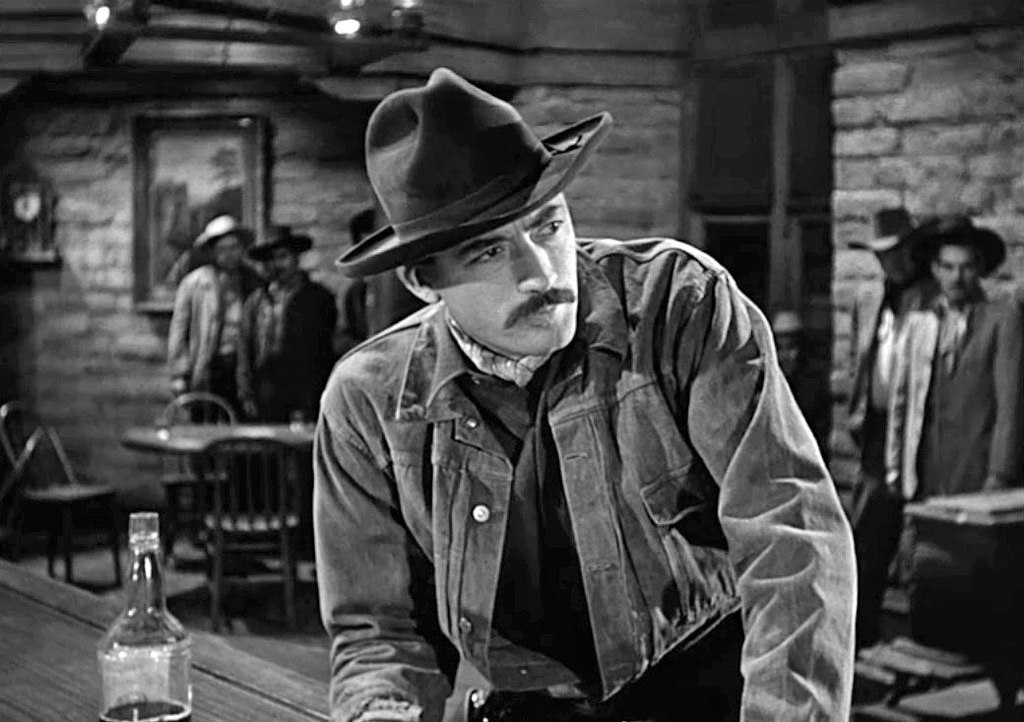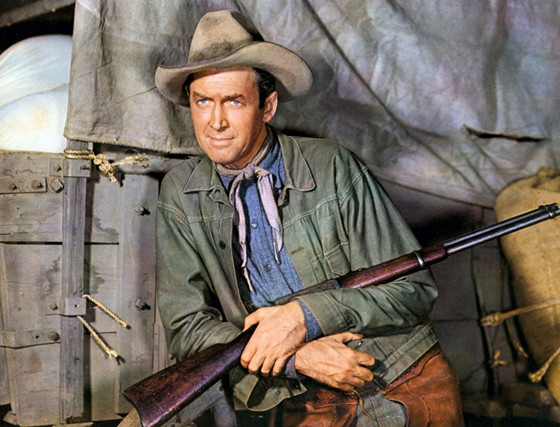
Defining classic is tricky, and determining which classics are more seen than others is even trickier. For entry-level purveyors of the Western, the following ten films exist in the outer circles of the genre’s dartboard, far removed from AFI lists or IMDb boards yet close enough to be available to watch, providing you have a good look.
Spanning the Golden Era to the Revisionist and Spaghetti Western era, the following films are all united by one crucial aspect: they are bloody brilliant Westerns.
1. The Gunfighter (1950)

Gregory Peck and Henry Fonda have very similar careers: both are known for playing the everyman American hero searching for justice, both made a Hitchcock film, both played a villain against type in their older years. The Gunfighter is one of Gregory Peck’s best Westerns, and feels like his answer to Fonda’s My Darling Clementine; a morality tale about the law in the Old West and the burden of being a famous gunslinger.
Henry King, who also directed Peck in The Bravados, films in wonderful black and white, keeping his leading man’s admirable, authentic moustache in constant view. Peck plays Johnny Ringo, one of the most compelling characters in the genre. Ringo is the fastest draw in the West, an unbeaten gunfighter. His legend is renowned and everywhere he goes young boys seek to challenge him and kill him to become the next legend of the frontier. Skip Homeier plays Bromley, the aspiring gunfighter who wants to take Ringo’s place. It is only by the end that Bromley realises the curse of glory, deconstructing the celebrity mantle as he faces a life of social exile, never able to attach himself to something he loves because he will always, always be chased. A remarkable film.
2. Vera Cruz (1954)

Vera Cruz is notable for one seriously overlooked aspect: it took the Western to the fringes of cynicism and war in Mexico, specifically the Franco-Mexican War in the 1860s. With characters caught in the crosshairs of moral ambiguity, Vera Cruz is a foundational text for the evolution of the genre.
The wattage is high with Vera Cruz’s electrifying star power: Gary Cooper and Burt Lancaster, two of the most reliable leading men of their era, lead the story as Ben Trane and Joe Erin respectively. Ben is a former Confederate looking to use his skills as a mercenary down south, whilst Joe is a dangerous leader of a bunch of cutthroats. The two fall in together and eventually clash over gold. Cesar Romero, the original Joker, plays the Marquis.
Shot entirely in Mexico, the first American film to do so, Vera Cruz is a fast-moving action-packed film, with Robert Aldrich calling the shots with skill from behind the camera.
3. Bend of the River (1952)

Everyone remembers Martin Scorsese and Robert DeNiro, John Ford and John Wayne, Tim Burton and Johnny Depp, but how many note Anthony Mann and James Stewart? From 1950 they made eight films together, and five are very good Westerns. Winchester ‘73, their first, remains the apex, but Bend of the River, their second, is hot on its heels.
James Stewart shed his everyman boy-scout persona in Winchester ‘73, and he doubled down on it in Bend of the River, proving that it was not a one-off against-type casting. As Glyn McLyntock, Stewart delivers a murky performance, navigating an uncertain line of morality. Similarly, Arthur Kennedy as Emerson Cole has to leave a trail of moral uncertainty. The rest of the story and characters are engaging, but it is the connection of these men that the movie leans on; are they friend or for? What is their breaking point? Life debts are exchanged but as the industrial world transforms around them, will they hold? Excellent scenery awaits.
4. Sergeant Rutledge (1960)

John Ford famously contained his Western narrative with The Man Who Shot Liberty Valance, but he did it a few years earlier for a film that strangely has not had as big a legacy: Sergeant Rutledge. A courtroom film meets, Western, the 1960 film is most notable for its African American lead: Woody Strode plays the title character. Ford, whose career has been divisively analysed for his attitudes towards race, took a huge swing by telling a Rashomon-style story about the framing of a black man.
Admittedly, Ford was still playing in the park of the 1960s: Strode is billed fourth and his story and closure is ultimately secondary to the romance of a young white couple. Strode makes it count, bringing his stoic demeanour to the proceedings with a simmering rage. Shot in colour, it is a Ford film so it looks great, too.
5. The Sons of Katie Elder (1965)

For pure enjoyment, hanging out with Henry Hathaway, John Wayne, Dean Martin, Elmer Bernstein and a young Dennis Hopper ranks highly. Katie Elder is never in the film, yet she casts a huge shadow and bags the final sentimental shot. This is a film about family and legacy; four sons reunite at their mother’s funeral and assess if they lived up to what was expected of them. Wayne and Martin, reuniting after Rio Bravo, crackle on screen. Playing the other two brothers are Michael Anderson Jr and Earl Holliman, who lack the star power but know well enough where the spotlight is being placed.
There is a cracking shootout within the film, set around a swampy bridge and the trees around it. It feels more sustained and more chaotic than previous Golden Era set-pieces and is utterly entertaining. Released in the mid-1960s, The Sons of Katie Elder competed with the rise of the Spaghetti Westerns and the emerging Revisionism of Sam Peckinpah and John Ford. In doubling down on cheerful sentimentalism and a brash, Saturday-morning serial energy, Henry Hathaway made this an effortless display of charm. Revisionism and grit is always appreciated, but they only work when in conversation with the simple goods of a film like The Sons of Katie Elder.